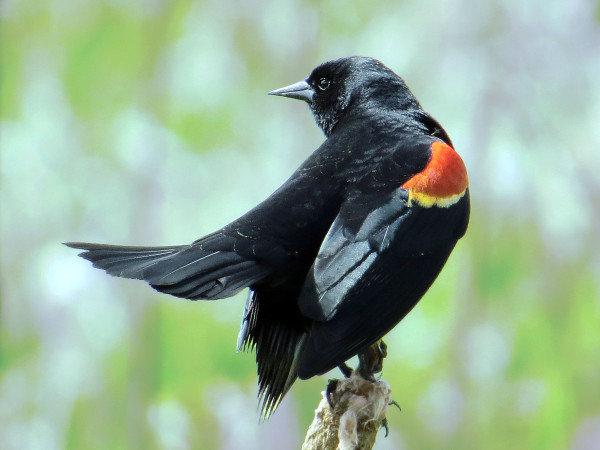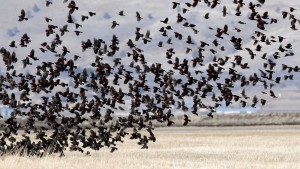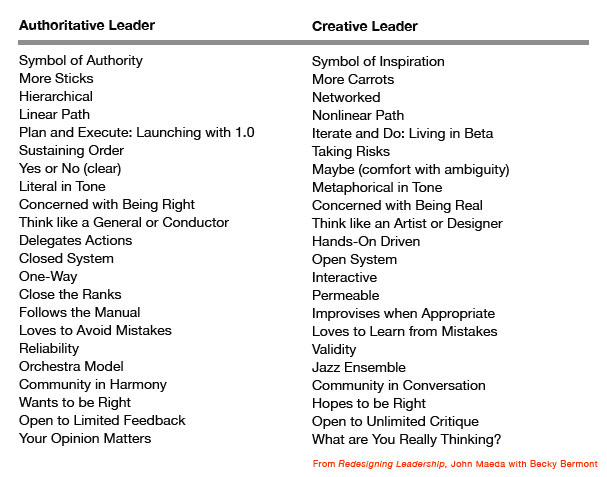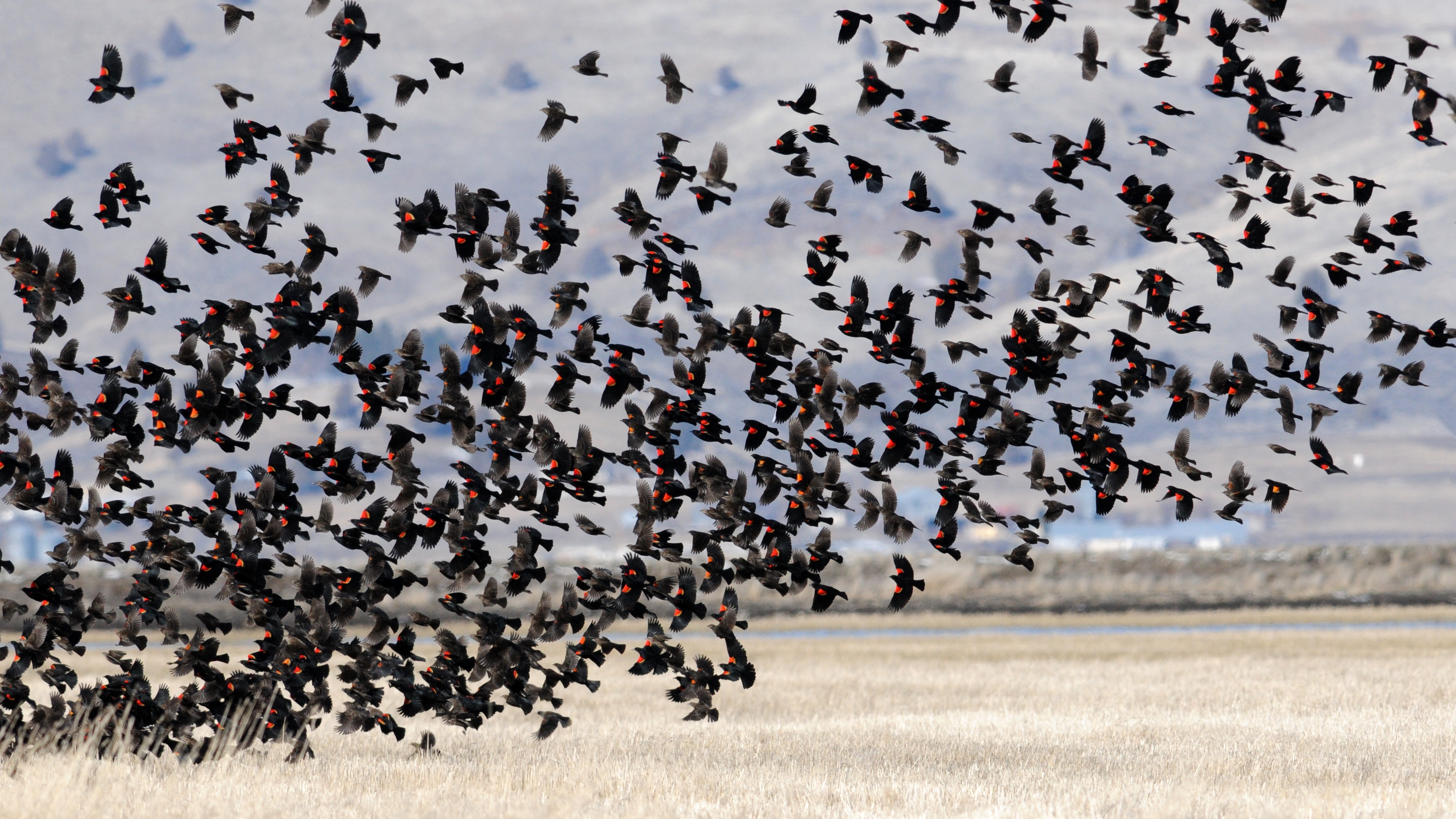Have you ever seen a ton of starlings or red-wing blackbirds swooping about in unison as if they were in some kind of mechanically choreographed mass ballet?
Of course the correct and archaic collective nouns to use there would be murmuration for the starlings and cloud, flock, grind, or merl for the blackbirds. But whatever – you know what I mean – a whole heap of them.
Murmuration or Mob Rule

They move together – swooping shifting flight that seems without design – together but not in any particular formation.
It’s not like geese (gaggle) who fly in the classic vee formation honking as they go. That’s about taking advantage of wingtip vortex – the downward stroke of the wing makes the same volume of air to be displaced upwards creating little whirlwinds at the wingtip. Birds that are close to these vortices and a little above get the benefit of the uplift and that’s an energy saver – helpful for the long hauls some of these birds (incredibly) accomplish.
The wings of starlings and blackbirds are small relative to their body size so they don’t get that the aerodynamic uplift advantage.
In his poem The Event Richard Wilbur perfectly captured this movement likening it to tossing a handful of grain and seeing it played in reverse:

“As if a cast of grain leapt back to the hand,
A landscapeful of small black birds, —They roll
Like a drunken fingerprint across the sky!” and then —They tower up, shatter, and madden space
With their divergences, …”
And if you want to see a demonstration of that “drunken fingerprint across the sky” check out this video of hundreds of starling preparing to roost for the night swooping and swirling with precision and spatial coherence.
Pretty amazing right? So why does it happen and how? The why seems to have to do with a readiness to respond collectively to threatening conditions such as wind changes or an attack by a predator.
The field of collective animal behavior suggests that three elements are at work in the how: Move in the same direction as your neighbors; Remain close to them; Avoid collisions.
Chain of Command or Chorus Line?
Each bird is influenced by the others as if they are one entity not a mere collection of individuals. The coordination is uncanny. It’s as if they were iron filings in search of a huge and invisible moving magnet.
According to Wayne Potts, a zoologist who published in the journal Nature in 1984, birds in flocks are able to change direction quickly not just because they are following a leader, or their neighbors, but because they see a movement far down the line and anticipate what to do next. Potts called this the chorus-line hypothesis for bird movement.
What if our school organizations were more like murmurations than skeins of geese in flight formation? What would that look like? Is it even possible?
I know there must be many mega flaws in the murmuration metaphor than I have thought of. But still – it’s a starting point for conversation right? Those swooping, synchronized ballets in the sky are a collective response to the need for transformation and change of direction. It’s a network of influence on behalf of the group. And then they take a break and roost for the night. To do it all again another day.
We know change comes from within and top down mandates result in superficial changes that don’t last. And it is far easier to tear down and destroy, harder to build. How do organizations – and all the individuals within them – develop the capacity to function more like mission-driven starlings? We know change is inevitable. How do we do it intelligently, together?
The traditional hierarchical organizational of most schools is often shown in the classic org. chart tree with its chain of command and direct reports and supervisors and all the rest. It’s a model that shows the distribution of power, accountability and authority. It’s a structure and organization model akin to the military or the Church of England or Rome. This view of leadership is based on the assumption that people are powerless, lack vision and are incapable of seeing the need for and managing change.
What if power and authority did not come from the great magnet in the sky but from flocks capable of multiple points of influence capable of changing direction and transformation. What if we stopped trying to impose change from the top but relied more on the informed and collective wisdom of the crowd?
What if we established positions of influence and not just chains of command?
What might that look like in a school?
Seems like some schools have already been working on this creating incubators of influence and innovation and identifying people with job descriptions outside the usual org.chart structure.
Anyone have any examples they would like to describe and share?
Ship’s Captain or Choreographer?
Back in the 1990’s everyone was quoting Peter Senge on the need for a shared vision and systems thinking. (Lovers Beer anyone?)
In The Fifth Discipline (free download) Senge described what he called the learning organization based on mastery of five basic disciplines (systems thinking, personal mastery, mental models, shared vision and team learning). The leader of such an organization would be more of a designer rather than the traditional “boss” of traditional and authoritarian models.
At the recent NAIS annual conference the keynote speaker was designer and creative leader John Maeda. He has also written and spoken about the need for a quite different model for leadership. It’s summed up in his chart:

And here is the full text of that poem that so accurately describes the astonishing phenomenon of a migrating murmuration. This time of year you may be lucky to catch a smaller version – red-wing blackbirds sweeping and swooping together out by a marshy field or stream’s edge.
The Event
As if a cast of grain leapt back to the hand,
A landscapeful of small black birds, intent
On the far south, convene at some command
At once in the middle of the air, at once are gone
With headlong and unanimous consent
From the pale trees and fields they settled on.What is an individual thing? They roll
Like a drunken fingerprint across the sky!
Or so I give their image to my soul
Until, as if refusing to be caught
In any singular vision of my eye
Or in the nets and cages of my thought,They tower up, shatter, and madden space
With their divergences, are each alone
Swallowed from sight, and leave me in this place
Shaping these images to make them stay:
Meanwhile, in some formation of their own,
They fly me still, and steal my thoughts away.Delighted with myself and with the birds,
I set them down and give them leave to be.
It is by words and the defeat of words,
Down sudden vistas of the vain attempt,
That for a flying moment one may see
By what cross-purposes the world is dreamt.Richard Wilbur



I love this analogy!
The wisdom of the birds.
Not mob but murmuration.
The fingerprint smudge in the sky.
Thanks Christine – I feel the same way about seeking the parallels for inspiration. There was a wonderfully magical mini-murmuration of starlings at PDS drop-off time this week. I saw them first at the flagpole and then they took off across the access road and then further afield. It’s extraordinary to see that “inky finger'” in the sky.
I think you know how much I enjoy witnessing a murmation and equally how much I enjoy looking to Nature for inspiration, insight and guidance. This is a lovely reflection on ‘what would happen if…?’
Thank you!
Nature always has the best answers to our questions and solutions to our problems. We have to learn to listen. And listen some more. Leadership – that lies within all of us – is a key. We have to learn to listen to nature. It starts with stopping.